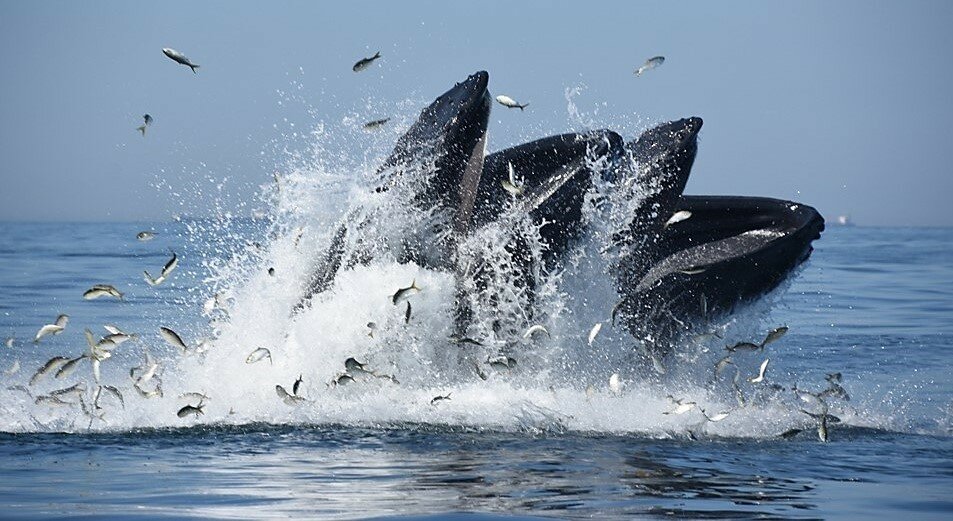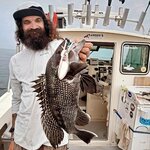- WEDNESDAY, AUGUST 14, 2024
It’s time to put ecosystem-based management into practice
In 2015, the Rhode Island Saltwater Anglers Association led the nation with an Ecosystem-Based Fisheries Management (EBFM) themed Southern New England Recreational Fishing Symposium. The best possible scientists and speakers in the nation to address the issue were invited to speak.
Topics selected included defining what ecosystem-based management was, how climate change impacts the ecosystem, the need to protect forage fish, and how to improve recreational fishing harvest estimates with anglers electronically recording catch and effort.
It is ten years now, and it is time to act. It is time to accelerate management implementation and put ecosystem-based management into practice.
In 2024, NOAA Fisheries released a new EBFM policy as well as a Road Map on how to implement and integrate EBFM into management, meaning how NOAA Fisheries and its regional councils manage fisheries. They have asked the fishing community to weigh in on its draft Road Map by Aug. 31.
NOAA defines EBFM as: “A systematic approach to fisheries management in a geographically specified area that contributes to the resilience and sustainability of the ecosystem; recognizes the physical, biological, economic, and social interactions among the affected fishery-related components of the ecosystem, including humans; and seeks to optimize benefits among a diverse set of societal goals.”
Regional example of EBFM
A local and regional example of EBFM is Atlantic menhaden, how they need to be managed as part of a large ecosystem and not just as an individual species. A host of animals rely on Atlantic menhaden, including whales, tuna, striped bass, bluefish, sharks, osprey and a host of others. Humans rely on them too, and the entire recreational fishing industry in the Northeast. Without Atlantic menhaden, there would be a lot fewer striped bass fishing trips, which would impact bait shops, tackle manufacturers and recreational fishers, as more fishing trips target striped bass than any other species. So, the fulfillment, joy and food source anglers get from striped bass needs to be taken into consideration when managing Atlantic menhaden.
A similar challenge presents itself with other bait fish too, such as squid for example, which is a primary driver of commercial fishing in the state of Rhode Island but also is the food of choice by many animals and the bait of choice used by anglers when fishing for species such as summer flounder, black sea bass, scup, etc.
The draft EBFM Road Map provides a national implementation strategy for the policy. It describes how to operationalize the six guidelines established in the EBFM Policy. For each guideline, it identifies three goals and one or more action items to implement each goal. The draft is a good start, however there are plenty of areas for improvement. Here are a few key enhancement points:
1. Make the Road Map more relevant to NOAA’s regional councils that are responsible for implementing plans in the region. In our region, that’s the New England Fishery Management Council. The councils have a crucial role to play when it comes to incorporating ecosystem and climate information into how fisheries are managed. Consider for greater consideration of the council role throughout the document.
2. Bulk up the climate considerations in the document. Climate change is here now and already having serious impacts on fisheries. Addressing climate change by developing new scientific tools and approaches and changing how we do management is one of the most pressing needs for fisheries. There needs to be more that explicitly links climate risk to specific changes in management decisions.
3. Make sure this gets implemented effectively. The Road Map is aspirational, but it will only be as good as its implementation.
4. And last, there needs to be something more to build on the EBFM Road Map to address the urgency of climate change impacts. One way to meet the shortcomings of the draft EBFM Road Map would be for NOAA Fisheries to collaborate with the councils to co-develop an additional policy or agreement that would explain how they will work together to implement the Road Map, especially with respect to climate-ready fisheries.
Public comments will be accepted through Aug. 31, 2024, via e-mail to nmfs.ebfm.roadmap@noaa.gov.
Where’s the bite?
“Freshwater fishing continues to be outstanding. Top water frogs and spinner baits are working well for smallmouth, largemouth, pickerel and black crappie,” said Jeff Sullivan of Lucky Bait & Tackle, Warren. Tom Giddings of the Tackle Box, Warren, said, “Customers are doing well with shiners targeting largemouth and catfish at both Gorton and Sandy Ponds in Warwick.”
Striped bass, bluefish, bonito
Declan O’Donnell of Breachway Bait & Tackle, Charlestown, said, “There has not been a lot of bluefish around lately. Small bait continues to spread out around the pond.” Matt Conti of Snug Habor Marina, South Kingstown, said, “We have a lot of sharks on the Southeast side of Block Island, so anglers catching striped bass should be aware when fish come to the boat or when they are trying to revive fish. Last week striper fishing picked up a bit on the southwest side of the Island. And, anglers have been hooking up with bonito from the West Wall of the Harbor of Refuge as well as from boats off South County beaches.”
“Striped bass and bluefish bite has slowed. No major positive reports from customers,” said Tom Giddings of the Tackle Box, Warwick.
Fluke (summer flounder), black sea bass and scup
Matt Conti of Snug Harbor Marina, said, “The fluke bite along the southern coastal shore has been fair. Anglers are catching larger black sea bass now too. Fishing for fluke at Block Island has been good on the southwest side of the Island.”
“Anglers are hooking up with very large scup and summer flounder from the Rocky Point Fishing Pier. Not many keepers but one customer caught six short fluke,” said Tom Giddings of the Tackle Box.
Jeff Sullivan of Lucky Bait & Tackle, Warren, said, “We are still finding fluke in shallower water. Started targeting them in deeper water, the 60-foot range, but backed off to shallower water and did much better — a lot of shorts with keepers mixed in off Newport. The black sea bass bite has been pretty good too.”
Bluefin and yellow fin tuna
“The bluefin tuna bite is OK at the Gully. The yellow fin bite has not been good at all. Tuna just do not seem to be close as they were last year at this time,” said Matt Conti of Snug Harbor Marina.
Dave Monti holds a master captain’s license and charter fishing license. He serves on a variety of boards and commissions and has a consulting business focusing on clean oceans, habitat preservation, conservation, renewable energy, and fisheries related issues and clients. Forward fishing news and photos to dmontifish@verison.net or visit www.noflukefishing.com.
Other items that may interest you









